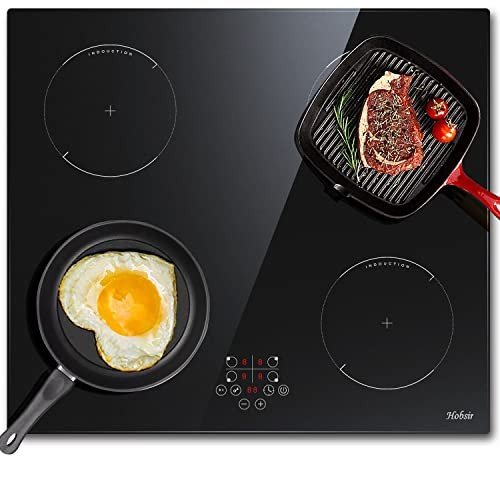Understanding Oven Hobs: The Heart of Culinary Crafting
In the realm of contemporary cooking areas, the oven hob stands apart as a vital device. Not just is it a main element for preparing a range of meals, however it likewise influences kitchen looks, functionality, and efficiency. Fan Oven Sales explores the kinds of oven hobs, their features, benefits, and upkeep ideas. Additionally, it addresses some frequently asked questions to offer a comprehensive understanding of this essential kitchen device.
Types of Oven Hobs
Oven hobs can be classified into a number of types based upon their energy source and style. Understanding these variations can assist consumers make notified choices when picking the perfect hob for their kitchen requires.
1. Gas Hobs
Gas hobs use natural gas or gas as fuel, providing precise temperature control and immediate heat. They are favored by many chefs for their capability to provide visual feedback through flame.
Pros:
- Quick heat-up time.
- Exact temperature level modifications.
- Compatible with all kinds of pots and pans.
Cons:
- Requires a consistent gas supply.
- Security concerns with open flames.
- Needs more upkeep.
2. Electric Hobs
Electric hobs are powered by electricity and feature smooth glass or ceramic surface areas. They typically are available in two types: coil and solid.
Pros:
- Sleek look.
- No open flames, reducing safety dangers.
- Easy to clean.
Cons:
- Slower to warm up and cool down.
- May require specific cookware (induction).
- Some may have uneven heat circulation.
3. Induction Hobs
Induction hobs use electro-magnetic energy to straight heat pots and pans. They just deal with ferromagnetic pots and pans.
Pros:
- Very energy-efficient.
- Quick heating & cooling times.
- Safe, as the surface remains fairly cool.
Cons:
- Limited to particular types of cookware.
- Greater initial cost.
- Can produce sound when in use.
4. Strong Plate Hobs
These electric hobs feature solid metal plates that warm up and retain heat for cooking.
Pros:
- Durable and trusted.
- Straightforward operation.
Cons:
- Takes time to warm up.
- Less efficient than induction and gas designs.
| Hob Type | Heat Source | Looks | Maintenance |
|---|---|---|---|
| Gas Hobs | Gas | Traditional | Moderate |
| Electric Hobs | Electrical power | Modern/Sleek | Low |
| Induction Hobs | Electromagnetic | Contemporary | Low |
| Solid Plate Hobs | Electrical energy | Classic | Typical |
Features to Consider When Choosing an Oven Hob
When selecting the ideal oven hob for your kitchen, there are numerous important features to take into account. These include:
- Size: Ensure the hob fits the designated area in your kitchen.
- Variety of Burners: Consider your cooking design and how many burners you'll require.
- Control Type: Look for user-friendly controls, whether touch-sensitive or knobs.
- Safety Features: Many modern-day hobs consist of safety steps like flame failure gadgets or kid locks.
- Energy Efficiency: Choose energy-efficient models to minimize energy expenses and reduce your ecological impact.
Advantages of Using an Oven Hob
The oven hob offers numerous benefits that accommodate both amateur cooks and expert chefs. Here are some essential advantages:
- Versatility: Whether boiling, frying, simmering, or sautéing, an oven hob accommodates numerous cooking techniques.
- Convenience: Many hobs come with extra functions like timers and automated shut-off systems for included convenience in hectic kitchen areas.
- Improved Cooking Control: The immediate heat reactions of gas and induction hobs permit for much better control over cooking temperatures.
- Design Enhancement: Modern hobs can boost the overall visual of a kitchen, including a contemporary touch.
Maintenance Tips for an Oven Hob
To make sure the durability and efficiency of an oven hob, proper maintenance is crucial. Here are some upkeep pointers:
Regular Cleaning:
- Use a soft fabric and moderate cleaning agent to clean surfaces after each use.
- For induction and ceramic hobs, avoid abrasive cleaners to avoid scratching.
Check for Wear and Tear:
- Inspect rubber seals and connections in gas hobs frequently for any damages or leakages.
- Make sure electrical connections are safe and secure in electric hobs.
Professional Servicing:
- Schedule regular maintenance contact a qualified professional to avoid significant issues.
The oven hob is a vital part in any kitchen, serving as a centerpiece for cooking undertakings. Whether choosing Fan Oven Sales , electric, or induction, comprehending the different types, functions, and maintenance requirements is necessary for making an educated choice. A well-chosen hob not only enhances cooking performance but likewise improves the general kitchen experience.
Often Asked Questions (FAQs)
1. What type of hob is best for a novice?
Electric hobs are typically favored by beginners due to their ease of use and upkeep.
2. Can I use all pots and pans on an induction hob?
No, induction hobs require ferromagnetic cookware for them to work effectively.
3. How do I understand if my gas hob is working effectively?
Routinely look for even flame distribution and listen for any hissing sounds that may show leaks. If in doubt, speak with a professional.
4. Is a greater rate constantly much better for hobs?
Not necessarily. While higher-priced designs might provide advanced features, numerous mid-range items offer exceptional performance and longevity.
5. Can I set up a hob myself?
It is recommended to hire a professional, especially for gas hobs, due to security issues and local policies.
By comprehending the subtleties of oven hobs, home cooks can make a well-informed decision that lines up with their cooking ambitions and kitchen designs. Choosing the right hob improves both the cooking experience and kitchen aesthetic appeals, making it an essential financial investment for any home.

